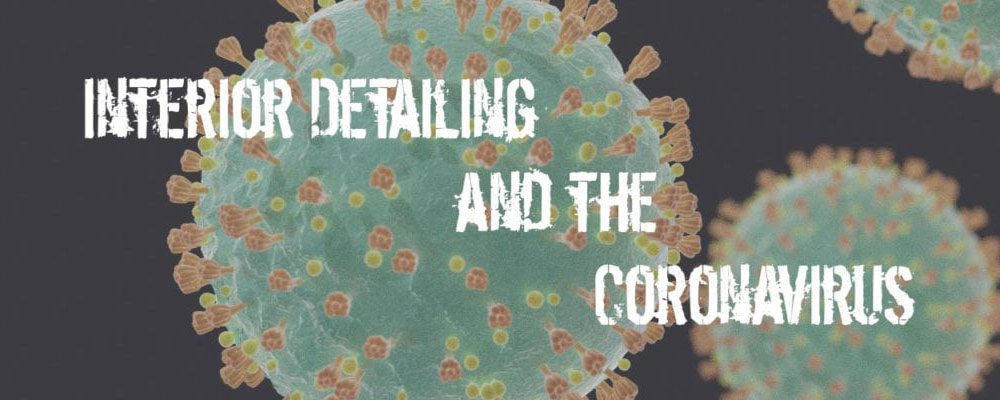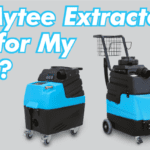The professional detailer has always dealt with cleaning surfaces prior to applying vinyl dressings. But what about disinfecting – the removal of what could be deadly pathogens within the interior? My goal was to find out how to do it.
In this post, detailers will learn how to:
1. Make a plan of action.
2. Choose the best chemicals for disinfecting car interiors.
3. Disinfect leather surfaces.
4. Disinfect upholstery.
The first place I looked for help was in the Owner’s Manual of my car. The only other time it was ever opened is when I needed to program the clock on the dashboard. Surprisingly, it provided extensive instructions on cleaning and caring for the interior, but nothing on disinfecting. Contacting the dealer and manufacturer didn’t help either. Dealing with coronavirus is a first for most of us.
As COVID-19 spreads, you have probably already learned the proper technique for washing your hands and which soaps, cleaners and disinfectants can destroy the coronavirus.
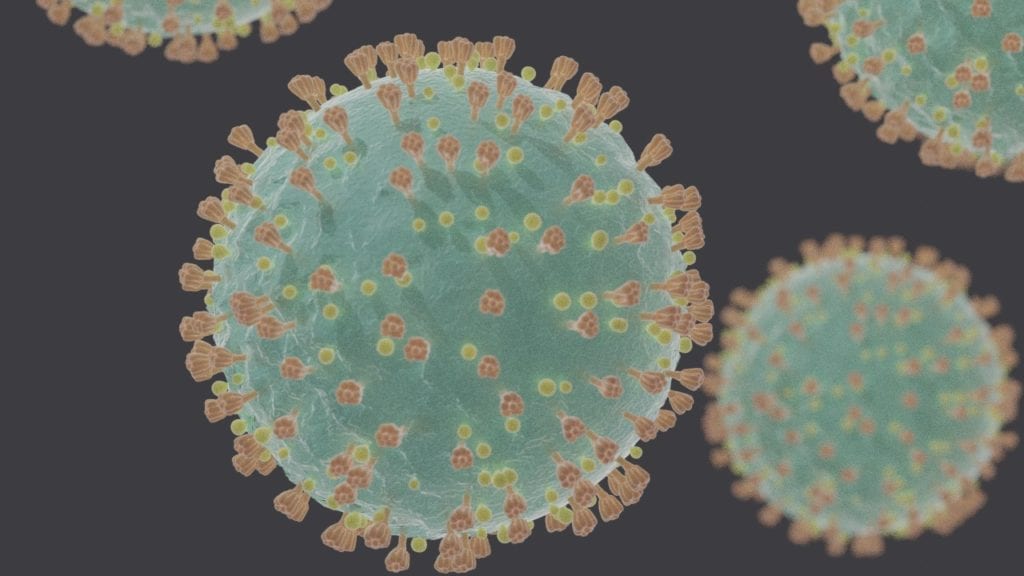
The New England Journal of Medicine did a study on how long novel human coronavirus survives on a range of surfaces. The longer the virus remains alive on a surface the greater the chance it can locate a new host. The report concludes coronavirus can exist on stainless steel and plastic for two to three days.
Another study listed in the Journal of Hospital Infection surface tested several nasty viruses including SARS. It concludes the virus can live on ceramics, glass, rubber and plastics two to nine days – the same materials used inside a car.
Considering these disturbing studies, one can’t be too careful. Before detailing your client’s interior, it must be thoroughly cleaned and sanitized. Who knows, your client could be an Uber or Lyft driver serving hundreds of customers!
Professional detailers, it’s time to make a plan of action. Use these four steps as your guide:
Step 1 – Consider safety first.
Step 2 – Clean surfaces with a one-use cloth.
Step 3 – Choose effective chemicals and disinfectants.
Step 4 – Use steamers and extractors.
Coronavirus Safety
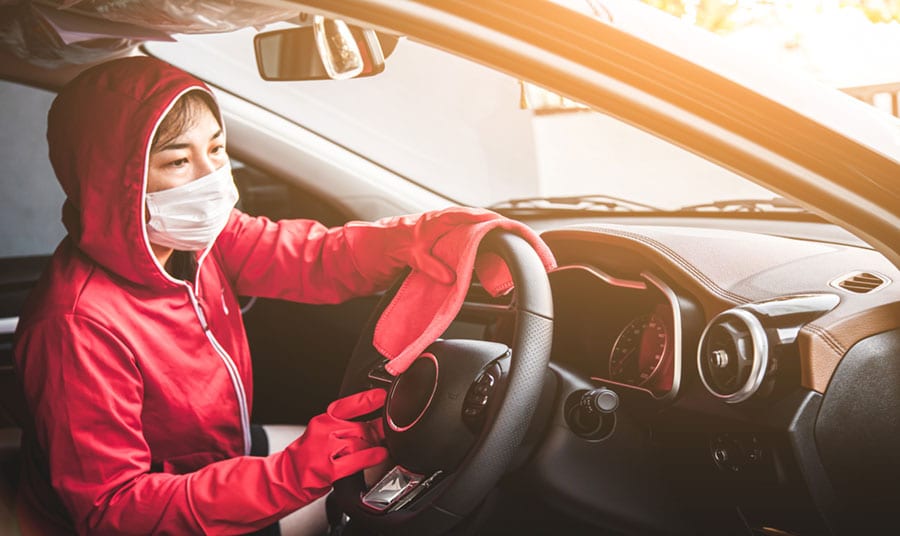
Here are 3 safety supplies you’ll want to have on hand:
1. Disposable nitrile gloves
2. Face mask
3. Disposable microfiber towels
Common sense dictates detailers wear protective gloves. There are many good choices available for hand protection. I recommend disposable nitrile gloves. Introduced during the AIDS Epidemic in the 1990s, nitrile helps protect from perforation, chemical and biological threats during sanitizing. After one use, gloves should be discarded, and hands thoroughly washed.
What about a mask? It won’t hurt and can help, especially during decontamination. When an industrial respirator or disposable N95 face mask and face shield (or goggles) are used, the possibility for chemical, inhalation and biological harm are reduced. Also, the likelihood of the detailer touching his face or eyes while wearing a mask is lessened, and that is a good thing!
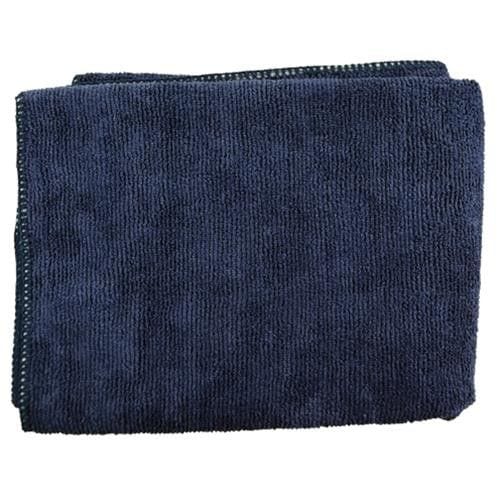
Secondly, OSHA’s best practices dictate cleaning bio-threatened surfaces with a one-use cloth. Disposable microfiber towels are ideal for this application. The softness and scouring proficiency of microfiber is far superior to cotton cloths and disposable wipes, especially on textured surfaces. Since disposable microfiber towels are available at a low-cost, they are ideal for this application.
Expert tip: Being available in five colors enables “color coding,” reduces the possibility of mixing contaminated towels with drying and polishing towels.
Another option would be “closeout microfiber towels.” They’re discontinued towels that were purchased from a distressed seller. The towels are never distressed and very economical.
What should you do? Discard your towels after one use.
Think of it this way, if you were cleaning in a hospital, would you want to bring the cloths home, wash them and use around the house? Bacteria and more importantly viruses live and thrive in damp cloths. Detergents do not necessarily kill Ebola, Bacteria or Coronavirus. Cleaning cloths in hospitals always leave the building as bio-hazard waste, and so should yours.
Chemicals for Disinfecting Car Interiors
What should you do? Buy isopropyl alcohol-based cleaners.
According to the Centers for Disease Control and Prevention, alcohol solutions containing at least 70-percent alcohol is an acceptable method of killing coronavirus on flat and textured surfaces.

Quoting from a recent Consumer Reports article on this subject – Jeff Stout, executive director global innovation at Yanfeng Automotive Interiors claims “for the most part, nearly every interior surface of a vehicle can be cleaned with isopropyl alcohol.”
As listed in Consumer Reports, Yanfeng is the world’s largest supplier of automotive interior parts and works with every major automaker. If you’ve been in a car, you’ve probably seen or touched something Yanfeng has made—and it uses isopropyl alcohol for cleaning parts in its own factories.
Isopropyl alcohol is safe for use on:
– Plastic trim
– Painted chrome
– Imitation leather
It is NOT safe on:
– Genuine leather
What About Other Disinfectants?
Use:
• Quats (quaternary ammonium compounds) are commonly used as surface disinfectants, applied alone or added to cleaning products. They can be found in all-purpose cleaners and wipes.
• Simoniz RTU Interior Car Surface Sanitizer, Disinfectant & Deodorizer. It is a proven soft surface sanitizer that gives you the power of cleaning, sanitizing and disinfecting in one easy step. Simonz claims it will do everything the detailer needs to get done.
Don’t Use:
• Bleach or hydrogen peroxide in the car’s interior, as they could damage upholstery.
• Ammonia-based cleaners on car touch screens, as they could damage anti-glare and anti-fingerprint coatings.
Expert tip: Although Quats are not harmful on most hard-non-porous surfaces they should be used with caution, wearing gloves and eye protection in well ventilated areas. I would recommend applying it first to a small hidden surface area to determine if there is any interaction.
What About Leather Surfaces?
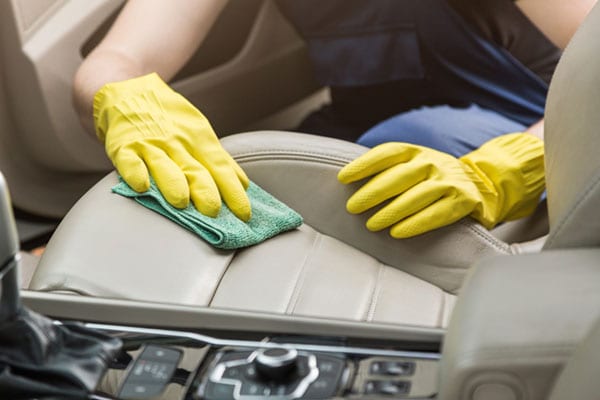
Volvo Cars of Dayton, a dealership in Dayton Ohio has an extensive section on their website titled: Disinfecting Your Vehicle Interior to Prevent the Spread of COVID-19. The site lists:
“If your Volvo or other vehicle has a leather interior, it probably has a thin protective coating to prevent discoloration. Isopropyl alcohol can deteriorate that coating and even remove the dye from the leather itself.”
The dealership advises do this:
• Clean leather steering wheels, seating, and trim with a combination of soap and water.
• After the soap sanitizes, use soft microfiber towels with a good leather cleaner and
conditioner to finish up the job.
Not that:
• Scrub hard when cleaning leather interior.
• Avoid excess suds and water.
What About Upholstery?
Viruses have been detected on fabrics after twenty-four hours. In an article in Consumers Reports Larry Kosilla, president of car detailing company AMMO NYC recommends: if your car has fabric upholstery, he cautions against cleaning it with too much water or too much soap. “The goal is not to create too many suds. If you get suds, you’ll have suds forever.” The article also mentions “if you soak through the fabric down to the cushion beneath, it could end up creating a musty smell or encouraging mold growth.”
Expert tip: clean and disinfect all leather and upholstery surfaces with a microfiber towel. The cloths are made up from fabric that contain hundreds of thousands microscopic fibers that lift and hold dirt particles and pathogens.
Of course, the most effective way to clean and sanitize automotive carpet and upholstery is with steamers and extractors. Hot steam is very useful in killing most virus and bacteria lurking in the fabric. Extractors on the other hand allow for deep disinfecting and cleaning with a variety of chemical solutions that can destroy pathogens continuously over a period.
Who knew in the modern era that detailing would become so challenging! In my lifetime I have seen the detailer’s business model evolve from “a guy with a bucket, can of wax and a few rags,” to a true professional with extensive knowledge of chemistry, paint finishes, best practices – and is now moving into public health!
Doctor Joe Gartland grew up in the textile industry, having previously worked for his family’s towel business. Over time, Gartland decided to branch out on his own, but needed a unique business name. Knowing that he had the towel expertise and the skills to “prescribe” unique textile solutions to many different problems, he began calling the company Towels by Doctor Joe. The full product offering is sold on www.kleenrite.com.
Doctor Joe Gartland
Questions or comments welcome at drjoe@kleenrite.com
Towels By Doctor Joe®
Kleen-Rite Corporation

